The Price / Alexandra Sokoloff
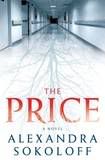 St. Martin’s Press / February 2008
St. Martin’s Press / February 2008
Reviewed by: Vince A. Liaguno
Perhaps the only thing scarier than the horrors of hospitals is the Democratic debate over universal healthcare. But while Clinton and Obama square off against each other on the national political front, the characters that populate Alexandra Sokoloff’s sublime second novel, The Price, find themselves waged in war against the devil himself. With hints of the ghostly doings of Stephen King’s Kingdom Hospital set against the larger political backdrop of The Omen films, The Price is a at once a supernatural medical chiller and deal-with-the-devil political thriller.
Will Sullivan is a product of privilege and wealth, a popular Boston District Attorney making a run for the Governor’s mansion. With strong familial ties to the state, a photogenic family by his side, and charisma to spare, he is considered by many to be the frontrunner in an ugly campaign against an archrival. But wealth and privilege can neither guarantee nor buy health as Will and wife Joanna soon learn when their cherubic five-year-old daughter, Sydney, is diagnosed with a malignant stomach tumor.
As the family settles in for an extended stay at the Briarwood Medical Center to combat Sydney’s cancer, Will finds himself drawn deeper into the labyrinthine maze of connecting hospitals. There he meets an enigmatic stranger named Salk whose shadowy presence slowly insinuates itself into the lives of the both the patients around them and the Sullivan family itself. Will suspects, too late, that Salk’s offer of counsel hides something far more ominous. When Sydney suddenly charts a miraculous recovery, Will fears that Joanna’s involvement with the mysterious Salk may mask a sinister connection.
Rest assured that Sokoloff will suffer none of the signs or symptoms of a sophomore slump with this confident follow-up to her Stoker-nominated debut - 2006’s The Harrowing. Written with the same strong sense of atmosphere and setting as Harrowing - especially in the book's first half where the action is set within the maze-like hospital system – The Price boasts a genuinely chilling, well-drawn set piece that includes creepy hidden hospital corridors and outdoor courtyards cast in the snow-covered shadows of looming marble statuaries. There’s nothing antiseptic about the horrors in Sokoloff’s hospital as her gooseflesh-inducing imagery jumps right off the pages, and her rich, graceful prose calls to mind names like King, Saul, and Levin:
Will looked out the glass wall into the shadowy garden. He moved grimly toward the doors and pushed through them into the icy night.
The cold hit him like a shock. Snow swirled in flurries around the elf and gnome statues in the children’s section of the garden. Clouds scudded over the full moon; in the preternatural light, everything seemed alive. The wind whispered through bare branches like a chant.
Will ran forward, crunching snow like glass under his feet. Breathing plumes of frost…down the gravel path between the skeletal trees…through the line of looming statues, ice frozen and glistening on their faces. The last statue reached for him with outstretched arms. Condensation dripped from its eyes, like tears.
When Sokoloff changes direction in the novel’s second half, one isn’t quite certain at first how the dramatic shift in setting will bode for the sense of continuity in tone and mood. But Sokoloff proves herself a master storyteller here, and readers will find themselves easily swept up in the Sullivan’s post-hospital story. And whereas the first half is decidedly creepier, the mystery and suspense elements are stronger in the book’s second half. Even the blueblood political world setting of Boston seems as fitting here in the book’s second half as the hospital does in the first.
Like The Harrowing, The Price relies heavily on its supernatural elements - but never heavy-handedly. And while some scenes ably deliver their nightmarish goods, Sokoloff imbues the prose with just enough otherworldliness that permits the reader to experience some of Will’s disorientation without falling out of her narrative grasp.
A poised and accomplished follow-up to its promising predecessor, The Price takes all the elements that made The Harrowing so memorable – the well-drawn characters, the strong sense of atmosphere and mood, the delicate balance between paranormal and reality – and drops them into the more ambitious backdrop of a political campaign where deals are made with the devil everyday and true evil is never more than an election away.
Purchase Alexandra Sokoloff’s The Price.
Duma Key / Stephen King
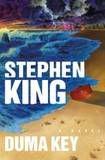 Scribner / January 2008
Scribner / January 2008
Reviewed by: Blu Gilliand
One piece of advice most writers hear at some point in their career goes: “Write what you know.”
Stephen King knows art. He knows pain. And he knows how the two sometimes go hand-in-hand. It’s a relationship he’s explored numerous times, through many vivid characters: Mike Noonan, the haunted author of Bag of Bones; Paul Sheldon, the captive writer of Misery; even Stephen King, the author of the Dark Tower books as he appeared in later entries of that series.
Edgar Freemantle, the central figure in King’s latest novel, Duma Key, is not a writer. As the book begins, he’s not an artist at all – he’s a self-made millionaire who still brings a lunch pail to the construction sites bearing his company’s name. A horrific accident takes Edgar’s arm, a good chunk of his memory, and eventually his wife, leaving him with violent mood swings and a serious need to, as his doctor says, build some “hedges against the night.”
For Edgar, those hedges come in the form of relocation to an isolated Florida isle called Duma Key, and in the rediscovery of his nearly-forgotten talent for painting. Edgar takes residence in a house he soon dubs “Big Pink,” an ocean-side retreat that, according to local legend, has hosted writers, poets and painters from the obscure to the famous. Whether the island, and the malevolent forces that gather along its shores like thunderclouds, feeds creativity or feeds off of it is one of the many mysteries that soon overtake Edgar’s new life.
King’s greatest strength has always been his ability to create characters that seem to live and breathe independent of the page. In Freemantle, as well as his Florida neighbors Elizabeth Eastlake and Wireman, King has once again given readers characters to care about, root for and mourn. And while his plots sometimes stretch thin enough to see through, he retains the ability to invoke pure white-knuckle terror with set pieces as simple as a suspiciously unlocked door, or the quiet grinding of shells caught in the tide.
Just as Freemantle seeks a kind of healing through his art, Duma Key is another step in the healing process for King, who continues to use his work to filter the infamous roadside accident that almost killed him nearly a decade ago. This novel finds the master back at full strength, continuing to knit his more literary sensibilities to the chills and thrills that have made him a household name. For anyone who’s been missing “vintage” King, the word slinger who made rabid dogs and possessed cars the stuff of well-written nightmares, here he is. Like he never went away.
Purchase Stephen King’s Duma Key.
Vacation / Jeremy C. Shipp
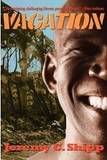 Raw Dog Screaming Press / April 2007
Raw Dog Screaming Press / April 2007
Reviewed by: Michele Lee
There's no question why Jeremy Shipp’s Vacation has generated so much buzz this past year. It's a transforming tale, one not even the prose itself can escape. In the beginning, the reader meets a man who appears no different than many of us. Profiting off the reputation, experience, and money of his parents, Bernard Johnson is an academic snob - not only an English teacher who enforces his own translations of classics on his students, but one who also defines metaphorical meaning for other teachers. But dissatisfaction is growing inside him. His girlfriend loves the fuzzy, convenient idea of him - not the soul within his flesh. His family has a nice, simple life planned out for him - one without the risk of failure because there is no need to try.
So Bernard opts to go on the Vacation, a corporate- sponsored, year-long trip around the world each American citizen is allowed. Some people find themselves on the Vacation; some leave bits of themselves behind. Bernard goes on the Vacation because he wants something more. Because he knows there's a transformation inside him.
And the Vacation is about to live up to its reputation. In the faux adventurous atmosphere of a carefully controlled foreign land, Bernard is kidnapped by the Garden, an enigmatic blend of social and environmental mindsets considered terrorists by those in charge.
Shipp writes in the beginning:
"The novel is nothing but a thick line between our two minds. It's a love spell, written in code."
This becomes one of many themes in this tightly written, literate tale of a dark, speculative future. Shipp connects immediately with readers, pulling them into the story not just by addressing them, but by pulling them in close , making the reader assume the role of Bernard's "Mom" and "Dad”.
The literary convention is also a strong force in Vacation. Being an English teacher and literati himself, Bernard often makes references to himself and the other players as fiction roles, implying that their story isn't just a story, but a metaphor on every level. When one person dies, so does the element they represent. When Bernard gives into impulse and finally reaches out to another person with a kiss, it's not just that person he's kissing goodbye, but everything that person represents in his personal story.
Part dream interpretation, part metaphor, and part blatant manipulation, Vacation is a transitive tale that can be broken down and explained in an oversimplified way with a reference to the nature of the language of the book itself. Vacation is the conjugation of the verb “be” - is, was, will be. The reader follows Bernard through a world that changes, not in itself, but because of how he views it - past to present to future.
Purchase Jeremy C. Shipp’s Vacation.
Deeper / James A. Moore
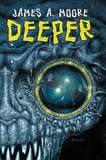 Necessary Evil Press / January 2008
Necessary Evil Press / January 2008
Reviewed by: Jeff Burk
Black Quill Award-winner James A. Moore (The Haunted Forest Tour, Bloodstained Oz) has repeatedly proven he can write brutal novels guaranteed to keep one reading long into the night. His latest is Deeper, a Lovecraftian adventure of sea monsters and ghost ships. Moore has once again given us a blood-soaked nail biter, just a few tentacles short of being a classic.
Joe Bierden makes his living on the ocean as a professional boat guide, hiring out his boat and crew to take others out onto the water. He is hired at the end of tourist season by a college professor to take him and a team of his students out to investigate rumors of ghosts and sea monsters at Golden Cove, an old decaying seaside town formally known as Innsmouth. Accompanied by a pair of famous parapsychologists and the professor’s beautiful assistant who doubles as the expedition’s chief diver, the group discovers more than it could have ever imagined, and Bierden finds everything he cares about at risk.
Moore writes the novel from Bierden’s point of view and does a fantastic job getting into the character's head. Bierden is rendered so three-dimensionally that the reader can often foresee what actions he will take as the story develops - not from any sense of predictability on the part of Moore’s narrative but from how well the reader comes to understand Bierden himself. As the story progresses and Joe's situation becomes even direr, the reader experiences his pain and fear.
While the book is well-written and undeniably exciting, it never fully delivers the all-out horror assault that Moore flirts with throughout the book. Cults, ghosts, and monsters enter and leave the story with abandon, keeping up a brisk pace, but none of these numerous horror elements are satisfactorily explored. Had Moore given more attention to tying together the various concepts and creatures he introduces throughout, the book would have been a much more satisfying read.
Moore has written a novel sure to appeal to fans of Lovecraft and sea-monsters, one that falls just short of setting a new standard. Deeper is pulp fiction at its most exciting, but it’s Moore's talented writing style that raises the novel above just another forgettable monster-romp. For those looking for a few hours of escapism, prepare to set sail because Moore has a thrilling voyage in store.
Purchase James A. Moore’s Deeper.
Australian Dark Fantasy & Horror (2007 Edition) / Edited by Angela Challis
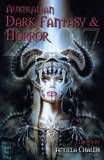 Brimstone Press / December 2007
Brimstone Press / December 2007
Reviewed by: Martel Sardina
Attention chain bookstore purchasing agents and librarians –there is more to the horror genre than best sellers like Barker, Koontz and King. (Nothing against the aforementioned authors - after all, without them the genre would go almost completely unrecognized.) However, if the people responsible for bringing fine horror fiction to the masses don’t know where to look beyond the heavy hitters, Editor Angela Challis has given them a fine place to start.
The 2007 edition of Australian Dark Fantasy & Horror is a reprint anthology featuring eighteen of the best stories the land down under has to offer. The anthology’s introduction summarizes publishing activity in Australian markets in 2006. The first story, “Cheat Light” by Terry Dowling begins when a man seeks the help of a lighting expert to determine how the images on a roll of film found in a secondhand camera were captured. The lighting expert is intrigued by the photos and joins the man in his quest. Further research leads to the opportunity to try and recreate the effect captured on film and the discovery of a forgotten evil.
Steven Cavanagh paints a heart-breaking portrait of a father’s loss in “Finding the Words.”
Robert Hood’s opening line to “In the Service of the Flesh” immediately captures the reader’s attention, setting the stage for a humorous journey as seen through the eyes of a zombie evangelist.
Three stories stand out as this reviewer’s favorites. “Surrender 1: Rope Artist” by Deborah Biancotti explores the darker side of BDSM and rope bondage. Kirstyn McDermott proves that revenge is a dish best served “Cold.” “The Red Priest Vigil” is the second story in Dirk Flinthart’s “Red Priest” series and chronicles the adventures of Tomasso Dellaforte during the Holy Inquisition. It is the follow up to “The Red Priest’s Homecoming” which was featured in ADFH’s 2006 Edition.
Those who like gangsters should find an enjoyable read in David Witteveen’s “Ache.” Who knew there was a way to give the American gangster a Lovecraftian spin?
The only story suffering from a technical glitch is “Hieronymus Boche” by Chris Lawson. This tale is rendered in the format of a soldier’s letter to his parents back home, but the problem lies in how the story was recorded. The author tells the reader at the outset that paper is scarce and that the soldier is writing in the margins of a prayer book. While the story itself is compelling, the mode of transmission seems unlikely given the setup.
The anthology closes with “Father Father,” a story that is bound to draw strong love/hate reactions. Paul Haines’s character Michael and his wife, Elise, want to become parents. The reader meets Michael on the day that he is to provide a specimen to be used in a fertility treatment. In order to provide the highest quality specimen, Michael must abstain from sex for several days - a process that is taking its toll on his sanity. Abstaining makes him cranky and brings thoughts that he could otherwise control to the forefront of his mind. The reader gets to know Michael, perhaps in ways that they might wish that they hadn’t especially by story’s end.
Australian Dark Fantasy & Horror’s 2007 Edition is a must-read anthology for horror writers and fans alike. The editorial commentary on Australian fiction markets at the beginning and the links section at the end provides valuable information for writers. The stories - while being purely enjoyable on a reader level - also provide writers with valuable insights on how to craft tales that can and should be remembered well into the future. And for those who have never gone beyond the name authors in this genre, now is the time to spread your wings.
Purchase Australian Dark Fantasy & Horror (2007 Edition) edited by Angela Challis.
Deadly Vision / Rick R. Reed
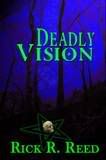 Quest Books / January 2008
Quest Books / January 2008
Reviewed by: Vince A. Liaguno
Hot on the heels of his enjoyable gay serial killer novel – last year’s IM – Rick Reed returns with another gripping thriller, Deadly Vision. Reed is quickly developing his own unique formula that blends suspense, fast-moving narratives, fully-realized gay characters, and a touch of the occult. His seeming bid to become a gay hybrid of James Patterson and Dean Koontz will not be lost on readers with this latest offering.
Cass D’Angelo, single mother to seven-year-old Max, is toiling away as a waitress in a small, depressed river town in Ohio. When Cass goes off after Max when he wanders off one afternoon during a thunderstorm, she runs afoul of a lightning strike and a falling tree limb. She awakens days later in the hospital – relieved to find Max safe – and discovers that the resulting concussion has left her with a newfound psychic ability. Before you can say Psychic Friends Network, Cass receives disturbing images of several local girls gone missing – their grisly fates playing out behind her mind’s eye. Fearing more deaths, the reluctant psychic reaches out to the police and to one of the missing girl’s parents – all of whom are skeptical. But when the father of a second missing girl begs Cass’ help in finding his daughter and her decomposing body is found along the Ohio River banks, Cass finds herself the center of unwanted attention from a pair of devil-worshipping killers desperate to find out how she found their carefully hidden grave. It’s here that the story kicks into even higher gear with a kidnapping, a manhunt, and – to a lesser extent - hints of a budding romance with a sympathetic female journalist.
As in IM, Reed again opts to tell his story through multiple points of view. And, again, it works surprisingly well even when minor characters like Cass’ mother get their chance at the storytelling bat. Laying out the actions and motives of your villains for readers is a tricky proposition - give too much and risk predictability at the expense of the suspense. But Reed expertly walks the tightrope between disclosure and omission, crafting passages told from the killers’ perspective that are appropriately chilling and give just enough away to readers so that their acquired insight translates into dread when the action switches back to Cass and company. It’s foreboding at it s finest with readers left muttering, “If you only knew what I know” at the book itself.
Reed also imbues Deadly Vision with a strong sense of setting, creating in Summitville a bleak tableau of working class hardship. One gets a strong sense of inevitability for the fictional denizens of the town, like they surrendered master status of their own destinies somewhere between unplanned pregnancies and factory closings. He nails the idea of familiarity and disconnection as analogous functions of small-town life:
When Sheryl McKenna’s mother opened the door, Cass felt as though she had already seen her. And maybe she had. Summitville was, after all, a small town. She could have passed the tired-looking woman on the street downtown, or served her in the diner. The woman stared at her with bright gray eyes, looking her over as if Cass were something she had discarded in the yard that had managed to make its way back to the porch. Mrs. McKenna was small, with no fat on her bones; she looked almost skeletal. Her skin was weathered, the result of too much sun, too much smoke. Her skin, combined with straw-like bleached blonde hair and hard eyes made her, Cass was sure, look older than her years. She held a cigarette in her hand, and the smell of tobacco smoke came out of the house in a wave when she opened the door.
Unlike IM, the lesbian romance is relegated to the background here, never even a glimmer of possibility until the third act - and even then it’s only alluded to in a near future. This is the novel’s only misstep – and a slight one at that – and an area where Reed missed an opportunity for deeper emotional investment in the reporter character of Dani Westwood. The lack of romantic connection to Cass keeps her at arm’s length for much of the action, consigning her to stock character status.
The novel’s supernatural elements are handled quite well, with Cass’ understanding of her precognitive abilities evolving gradually over the course of the book and never coming off as forced or over-the-top. Only toward the end when Cass encounters the spectral vision of one of the victims does one get the sense that they’re smack dab in the middle of an episode of Cold Case or The Ghost Whisperer – and that’s either criticism or commendation depending upon your level of tolerance for either of those shows.
The literary equivalent of a hybrid vehicle, Deadly Vision powers forward on a combustion of supernatural suspense, murder mystery, and breakneck thriller. With psychics and serial killers rendered with the same deft hand in a propulsive narrative likely to increase respirations, it takes no psychic ability to see that Rick Reed is headed for the top of the suspense class.
Purchase Rick R. Reed’s Deadly Vision.
Triage / Richard Laymon, Edward Lee, and Jack Ketchum
 Leisure Books / January 2008
Leisure Books / January 2008
Reviewed by: Jeff Burk
Three novellas, one simple, shared premise: a receptionist gets a phone call promising her murder, and then a stranger walks into the room and starts shooting. From this common starting point, Richard Laymon, Edward Lee, and Jack Ketchum each wrote a novella for Triage, the latest offering from Leisure's paperback horror line. Readers already familiar with these master dark scribes know what’s in store for them.
The highly-revered Richard Laymon leads off the collection with his story "Triage." Laymon takes the premise and runs in the most predictable direction, giving the read one hundred pages of stalking and slashing. Pulling the cheapest tricks from his bag, Laymon strips his female protagonist to her underwear almost immediately and subjects her to unremitting violence and sexual abuse. Throw in a completely nondescript villain and a plotline based around coincidence and convenience and you have one of Laymon's weakest offerings.
Edward Lee is next with "In the Year of Our Lord: 2022." He places his story on a spacecraft in a distant future where Fundamentalist Christians have taken over every aspect of society. The story follows Sharon after her near-fatal run in with a crazy gunman that, along with acts of attempted sabotage, begin to make her think that her ship's mission is not the standard refueling run as she was told. The final destination brings together metaphysics, theology, and hard-core horror in the gruesome page-turning fashion only Edward Lee can deliver.
Jack Ketchum finishes the collection with "Sheep Meadow Story." He abandons the opening premise about three pages into the story, revealing it to be a dream from which Stroup, a reader for Cosmodemonic Literary Agency, awakens. Ketchum gives the reader a tour of Stroup's personal hell in this quietly disturbing story. While it never becomes what one would classify as an overt horror story, "Sheep Meadow Story" is nonetheless deeply unsettling in its portrayal of a man with nothing left to live for.
Originally published as a limited hardcover in 2001 by Cemetery Dance, Leisure Fiction’s more affordable mass-market edition is unlikely to gain the authors many new fans. Triage is decidedly for those already familiar with its trio of dark scribes – hardcore fans who will devour the three new novellas. And while all three stories may not shoot-to-kill, they at least aim-to-maim.
Purchase Triage, featuring Richard Laymon, Edward Lee, and Jack Ketchum.




